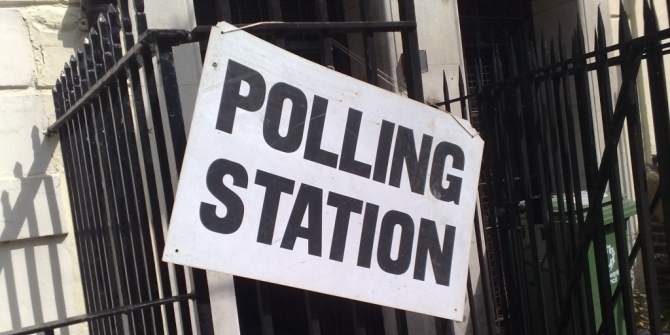 Deaths from Covid-19 among residents of care homes show a tenfold increase in the two weeks to 3 April, yet even this may be a considerable underestimate. Melanie Henwood explains that, while there will likely be an overall under-reporting of deaths during the pandemic, this is particularly marked with deaths that occur outside hospitals.
Deaths from Covid-19 among residents of care homes show a tenfold increase in the two weeks to 3 April, yet even this may be a considerable underestimate. Melanie Henwood explains that, while there will likely be an overall under-reporting of deaths during the pandemic, this is particularly marked with deaths that occur outside hospitals.
The grim accounting of the daily death total from Covid-19 continues. On 10 April, the daily UK figure climbed to 980 – the highest to-date – surpassing the highest daily deaths experienced in Italy and Spain which had been seen as the most severely impacted European countries. There has been some decline in daily deaths since, but it may be too soon to take any comfort from this or to see it as the start of a plateau.
However, the officially recorded Covid-19 deaths reported each day are only part of the picture as they are deaths that occur in hospital, and do not include any in the community or those in residential and nursing homes. There is growing concern that not only do the overall figures underestimate the actual deaths, but that they do so because they ignore the plight of people living and dying with the condition outside hospitals. It is important to know the full picture, not least because deaths in the community are both under the radar and have the potential to rapidly escalate. But it is also vital to address these wider deaths because they disproportionately impact on the oldest and frailest people, and to ignore them devalues the significance of those lives.
Evidence has been accumulating through social media commentary, but also through expert reporting, that the situation in care homes should be a matter of huge concern. In part the circumstances reflect the wider issues afflicting social care practice, particularly the shortages of Personal Protection Equipment (PPE), that have been widely identified. If care staff working in the community and in care homes have inadequate PPE, the potential for the infection to spread between people is enormous. Official reporting of the numbers of people dying in care homes from Covid-19 is increasingly being seen as a significant underestimate, and we may be looking at just the tip of the iceberg.
The data reported by Chris Whitty, the Chief Medical Adviser, on 13 April stated that there had been outbreaks of Covid-19 infection in one in seven care homes in England, and there were 237 deaths in care homes in England and Wales in the two weeks up to 3 April. But data from major providers of residential care paints a much worse picture: HC-One and MHA together operate 3% of care homes nationally, but have documented deaths of 521 residents in recent weeks.
This is not to argue that there is a conspiracy of silence or deliberate covering up of the evidence, although those views will become increasingly prevalent if the situation is not addressed. Yet it is apparent that the data collection and reporting are inadequate and likely to give false assurance that numbers are significantly lower than the reality. The Office for National Statistics (ONS) publishes provisional weekly registered deaths in England and Wales, but these figures are published 11 days after the week ends. Data up to 3 April 3 was released on 14 April and includes a breakdown of the numbers of deaths “where Covid-19 or suspected Covid-19 was mentioned anywhere on the death certificate, including in combination with other health conditions.” Between 20 March and 3 April in England and Wales, the number of Covid-19 deaths recorded in care homes rose from 20 to 217, a tenfold increase; deaths associated with Covid-19 occurring in hospices rose from two to 33; and those at home in the community from 15 to 136. Over the same period, those Covid-19 deaths recorded in hospital increased from 501 to 3,716. The total deaths from all causes recorded in that week – 16,387 – show an ‘excess mortality’ of more than 6,000 above what would normally be expected for this week of the year. Some 3,475 are directly associated with Covid-19 (according to death certificates), but in reality, many more may be.
There are good reasons to conclude that the numbers of Covid-19 deaths being recorded outside of hospitals are considerably underestimating the actual figures. International evidence is beginning to emerge, and analysis by the International Long-Term Care Policy Network across five European countries indicates that “care home residents have so far accounted for between 42% and 57% of all deaths related to Covid-19.” If there is inadequate testing of both staff and care home residents for infection, it is obvious that recorded deaths will also underestimate the true figures. Care England (the representative body of independent care providers) has estimated that the number of care home deaths already is nearer to 1,000; around five times higher than the official ONS figure.
It is not just deaths that are important here, it is also about the care and conditions for people who are dying in the community. Increasingly, it is being reported that GPs are not visiting care homes and that residents who become infected (or suspected as being infected) will not be taken to hospital. With PPE shortages not only does this increase the risks that infection will sweep through residents, but that people will die in homes that may lack the expertise and experience to support people dying in respiratory distress. The experience for residents, and the associated trauma of staff trying to support them, are awful to contemplate. An open letter sent to the Secretary of State for Health and Social Care by the Alzheimer’s Society, Marie Curie, Age UK, Care England and Independent Age sets out the issue:
We’re seeing people [in care homes] being abandoned to the worst that coronavirus can do. (…) they are told they cannot go to hospital, routinely asked to sign Do Not Resuscitate Orders, and cut off from their families when they need them most.
This issue is about the numbers – about the transparency, completeness, and reliability of the data recording deaths associated with Covid-19, and where those deaths are happening. But more than this, the big issue is what the data – and who decides what is measured and reported – tells us about how the incidence and experience of death from Covid-19 is regarded. All deaths matter; deaths of the frailest and most vulnerable citizens should be viewed as equally sad. The argument that people have ‘lived their life’ or ‘would have died anyway’ is poor comfort for those dying alone, afraid, and in considerable distress. Deaths in hospital from this epidemic are shocking; those occurring behind the closed doors of care homes, hospices, and in people’s own bedrooms, are the untold and apparently largely unrecorded tragedy.
____________________
 Melanie Henwood is an independent health and social care research consultant.
Melanie Henwood is an independent health and social care research consultant.
All articles posted on this blog give the views of the author(s), and not the position of LSE British Politics and Policy, nor of the London School of Economics and Political Science. Featured image credit: by Марьян Блан | @marjanblan on Unsplash.








The gov said older people especially those with under lying illnesses were the most vulnerable or majority of those who live in care homes or nursing homes, so why have they just left them, they should have been the same as hospitals. My opinion is that they did not take the virus seriously at the begging, did not have enough equipment to go round was very slow to put thing I to place and the gov is hiding behind following the scientific advice, you just have to listen to ministers when interviewed. They have been behind from the start, why not just come clean and work from there.